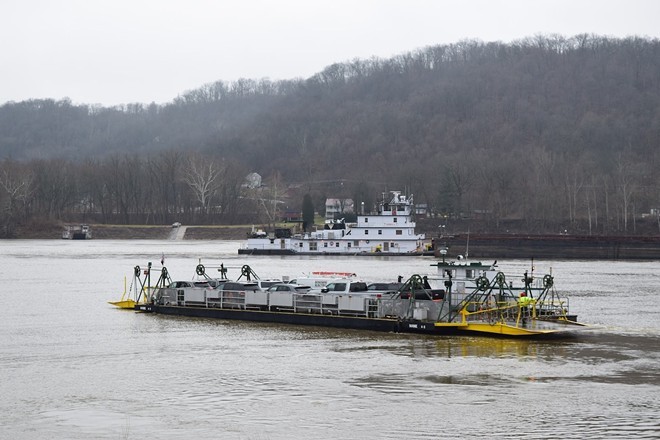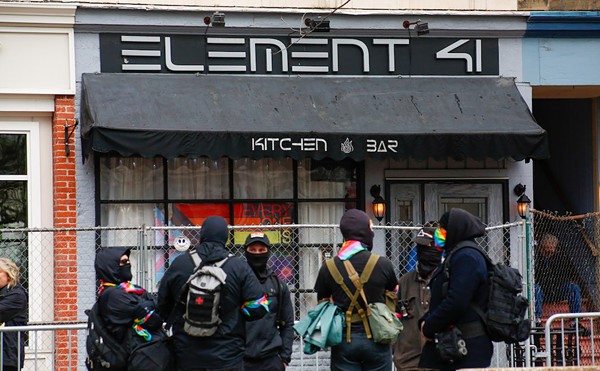Cincinnati Closes Water Intake From Ohio River 'Out of Abundance of Caution' for Possible East Palestine Disaster Toxins
Officials say that contaminated water likely will reach Greater Cincinnati over the weekend.
By Allison Babka on Fri, Feb 17, 2023 at 3:41 pm
[
{
"name": "Ad - NativeInline - Injected",
"component": "38482495",
"insertPoint": "3",
"requiredCountToDisplay": "5"
},{
"name": "Real 1 Player (r2) - Inline",
"component": "38482494",
"insertPoint": "2/3",
"requiredCountToDisplay": "9"
}
]
Cincinnati officials don't expect much harm from the chemicals flowing down the Ohio River from East Palestine this weekend, but the city will shut off water intake from the river nonetheless.
According to a Feb. 17 update from the city manager's office, Greater Cincinnati Water Works is closing the intake to avoid chemicals that have been detected in the Ohio River since the Feb. 3 Norfolk Southern train derailment and explosion in East Palestine, about 280 miles northeast of Cincinnati. The city temporarily will switch to water reserves in the meantime, the memo said. GCWW is making the move "out of an abundance of caution," officials said.
"Our city administration is prepared for these types of events. I understand the concern, and I’m confident that temporarily shutting off the Ohio River intake is the best move,” city manager Sheryl Long said in the release. “There’s zero risk that our water reserves contain contaminants from the train derailment site, and tapping these reserves will give us all peace of mind."
On Feb. 15, city officials said that contaminated water likely will reach Greater Cincinnati over the weekend, possibly on Feb. 19, depending on a variety of factors. The chemicals released from the train derailment include butyl acrylate, vinyl chloride, ethylene glycol monobutyl ether, and ethylhexyl acrylate. They're used in industrial processes including the production of lacquers, enamels, inks, adhesives, paint thinners and industrial cleaners, as well as plastic manufacturing. The colorless vinyl chloride has been associated with an increased risk of liver cancer and other cancers, according to the federal government’s National Cancer Institute.
Since the explosion, GCWW has been monitoring and testing nearby waterways for contaminants, finding "no detectable levels of the chemicals from the derailment site," the release said. GCWW posts results from its tests online and regularly provides updates.
The EPA recently said hazardous materials were found in samples taken from waterways near East Palestine, including Sulphur Run, Leslie Run, Bull Creek, North Fork Little Beaver Creek, Little Beaver Creek and the Ohio River. East Palestine residents have said they’re experiencing skin rashes, nausea, burning eyes and other symptoms after the explosion of toxic materials, and some have started to meet with scientists and sign up for independent soil and water testing for their homes.
In the Feb. 17 release, GCWW said that its reserves do not contain toxins from the train incident. The agency will continue to monitor the Ohio River until it finds conditions safe for reopening the intake. At that time, GCWW will use "optimized treatment" for the water, even if no chemicals are detected, the agency said.
Originally published by CityBeat, Scene's sister paper in Cincinnati.
Tags:
SCENE Supporters make it possible to tell the Cleveland stories you won’t find elsewhere.
Become a supporter today.
Scroll to read more Ohio News articles
Newsletters
Join Cleveland Scene Newsletters
Subscribe now to get the latest news delivered right to your inbox.











